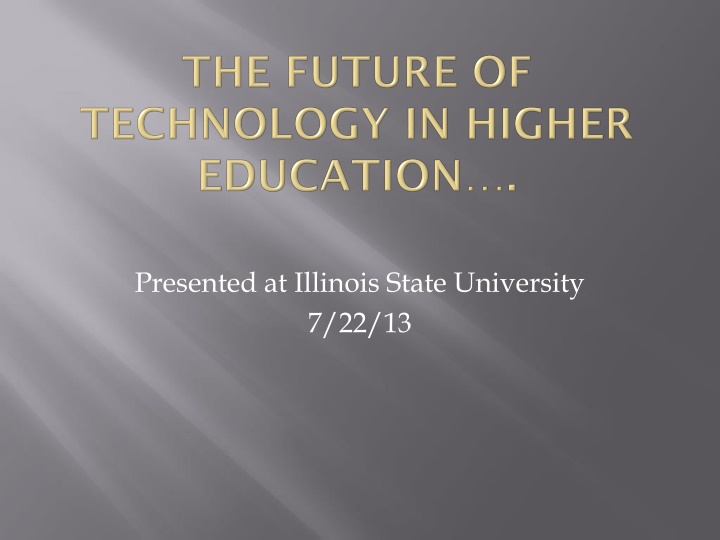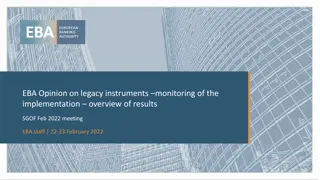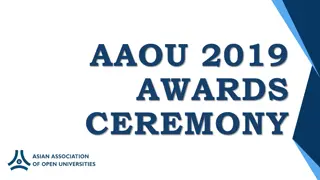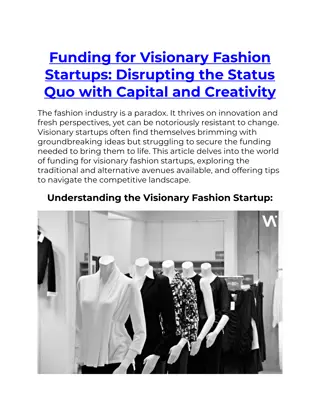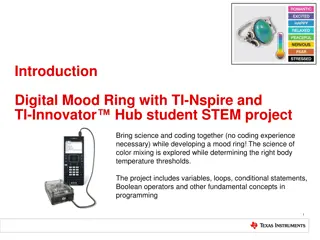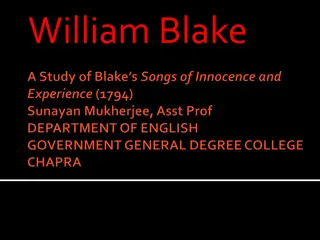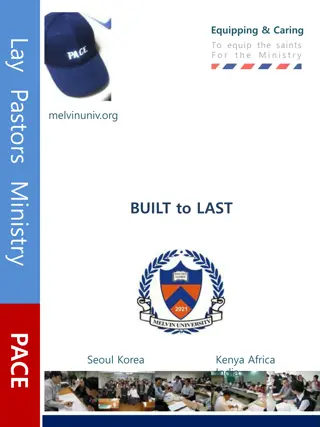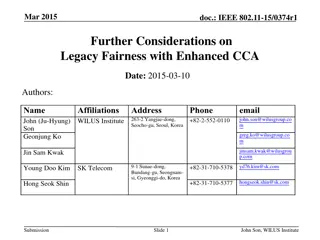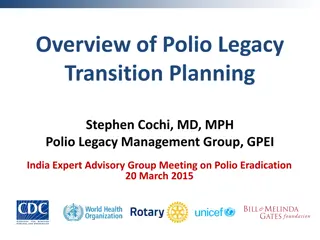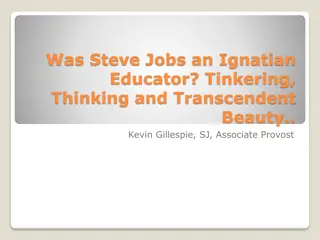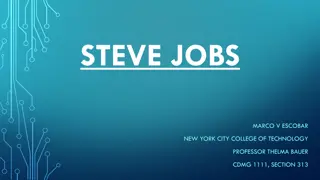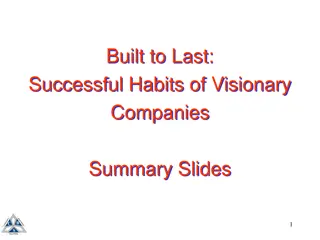The Legacy of Buckminster Fuller: Innovator and Visionary
Buckminster Fuller, a renowned figure in design and innovation, is known for his groundbreaking work in creating efficient and sustainable structures. His iconic dome home, assembled in just 7 hours in 1960, remains a symbol of architectural brilliance and forward-thinking design. Fuller's contributions to education, environmentalism, and sustainable living continue to inspire generations. Explore the remarkable life and work of this pioneer who coined terms like Synergy and Spaceship Earth.
Download Presentation

Please find below an Image/Link to download the presentation.
The content on the website is provided AS IS for your information and personal use only. It may not be sold, licensed, or shared on other websites without obtaining consent from the author.If you encounter any issues during the download, it is possible that the publisher has removed the file from their server.
You are allowed to download the files provided on this website for personal or commercial use, subject to the condition that they are used lawfully. All files are the property of their respective owners.
The content on the website is provided AS IS for your information and personal use only. It may not be sold, licensed, or shared on other websites without obtaining consent from the author.
E N D
Presentation Transcript
Was assembled in 1960 (in just 7 hours) Was the home of Buckminster Fuller from 1960-1971 Considered to be one of the strongest and most efficient structures known to humankind Patented the dome home in 1954 as a solution to humanity's need for safe, affordable and accessible housing. Sources- http://fullerdomehome.org
1200 square feet. 40 feet in diameter 2 bathrooms, 1 bedroom, 1 living room, and 1 kitchen The dome exterior is built of 60 triangles which form to make 6 pentagons and 5 hexagons. There are also 5 trapezoids built along the vertical portions of the exterior near the base of the structure. Ventilation is made by a central fan, ceiling ventilation grills and a peg-board floor on the loft. The dome home is heated with radiant hot water heating. Hot water flows through pipes placed in the floor which heats up the floor. Source: https://sites.google.com/site/buckytrimtabfuller/the-dome
Professor in the Design Department at Southern Illinois University from 1959 to 1972 Bucky is considered a grandfather the green movement. While a professor at SIUC, Bucky made the front cover of Time Magazine and was nominated for the Nobel Peace Prize. During his years in Carbondale he produced some of his most influential writing; more than a quarter of his 23 patents, and the bestowing of nearly half his 67 (mistakenly listed at 47 on the Fuller Dome Site) honorary doctorates. Was a friend and associate of Albert Einstein Coined the terms Synergy and Spaceship Earth among many others Sources- http://fullerdomehome.org/bucky & Education Automation (by Bucky Fuller)
In 1961 Bucky Fuller gave a presentation to the committee planning the SIU Edwardsville campus. The transcript of that presentation was published in 1962 as an 88 page book entitled Education Automation with a subtitle of Freeing the Scholar to Return to his work. In 1963 Bucky Fuller published a book entitled Operating Manual for Spaceship Earth with several chapters that also discussed education.
1. Technology makes the world smaller In the last half-century, man has graduated from a local twelve-mile radius daily domain into a world around multi- thousand-miles radius daily domain Airplane invented when he was nine years old (he was born in 1895) Lincoln was first connected president 2. Video learning & Growth of Distance Education At our universities we will take the faculty leaders in research or in teaching. We are not going to ask them to give the same lectures over and over each year from their curriculum cards . We are going to select, instead, the people who are authorities on various subjects . They will give their basic lecture course just once to a group of human beings, including both the experts in their own subject and bright children and adults without special training in their field. What you say is very good, his associates may comment, but we have heard you say it a little better at other times. The professor then dubs in a better statement. Thus begins complete reworking of the tape, cleaned up and cleaned up some more, as in the moving picture cutting, and new illustrative footage will be added on. The whole of a university department will work on improving the message and conceptioning of a picture for many months, sometimes for years. ...primarily the individual is going to study at home. There will come a time when the proper education of children, will be by a glorified system of spontaneous education of choice. Operation Manual for Spaceship Earth (1963)
3. Predicted the concept of an internet that he called two-way TV This means that with beam casting you are able to send individual messages to each of those houses. There is a direct, fixed, wireless connection, an actual direct linkage to individuals; and it works in both directions. It is also possible with this kind of two-way TV linkage with individuals homes to send out many different programs simultaneously; in fact, as many as there are two-way beamed-up receiving sets and programs. It would be possible to have large central storages of documentaries, great libraries. A child could call for a special program information locally over the TV set. Growth in demand 4. We know our world population is increasing incomprehendibly swiftly. There are enormous numbers to be educated.
1. Technology expanding our world 2. Video learning and growth of distance education 3. Explosion of the Internet (World Wide Web) 4. Growth in demand (IT and Education)
A. Haute Cottin- Haiti B. 2.4 Billion Internet Users Worldwide with 274 million in North America (11.4% of total) Internet 2012 in numbers only C. #1 IT issue currently facing Higher Education is Leveraging the wireless and device The 2013 EDUCAUSE Center for Applied Research (ECAR) study on the Bring-Your-Own Device (BYOD) trend estimates that students will bring three to four Internet-capable devices to campus in the fall of 2013.6 Top 10 IT Issues, 2013 Educause Review, May-June 2013
11 interesting facts on Massive Online Open Courses- $60 million Amount invested by Harvard and MIT to launch edX $21.1 million Venture capital funding that Udacity has raised 1.7 million Students who have registered for a Coursera class 370,000 Number of students who registered for edX courses in fall 2012 150,000:1 The student-to-professor ratio in a fall 2011 Udacity class 98% The percentage of professors that Udacity rejects 38.5% The percentage of free online classes that are taught from the United States 33 Universities that have partnered with Coursera 27% Percentage of MOOCs that focus on computer science 6% 15% Percentage of gross revenue that Coursera pays to a partner university 5% The pass rate in MITX s only massive open online course EdTech February 5, 2013
A. Internet in one minute More than 204 million emails are sent Amazon rings up about 55,00 ($83,000) in sales Around 20 million photos are viewed and 3,000 uploaded on Flickr At least 6 million Facebook pages are viewed around the world More than 61,000 hours of music are played on Pandora More than 1.3 million video clips are watched on YouTube B. By2015, the number of networked devices is expected to be double the world s population. http://www.dailymail.co.uk/sciencetech/article-2295703 March 19, 2013
A. Higher Education Demand Over the past decade, the number of people entering higher education has soared. Between 2000 and 2010, the percentage of adults worldwide who have received tertiary education rose from 19 per cent to 29 per cent, according to the United Nations Educational, Scientific and Cultural Organization A different World Times Higher Education. January 31, 2013 (http://www.timeshighereducation.co.uk/features/a-different- world/2001128.article) B. Increasing technology demand and complexity There s significant growth in IT complexity. Faster change cycles. Shorter development timelines. Reduced budgets. We need 24/7/365 global IT support. End users are driving IT; end users demanded access to iPads. Same with iPhone, and other smart phones. End-users are driving IT to make change. Gartner: 10 Critical Tech Trends For The Next Five Years (October 2012)
Information technology (IT) is the driving force for change as we move forward into our "magical" 21st century future. In the last century, we learned much of how science and technologies control our world. Today we are just beginning to exploit this knowledge and there is much to process. During this century, science and technologies will seem to overwhelm us with amazing breakthroughs all fueled by today s information technologies Other miracles complete this 21st century vision. By 2015, household robots will satisfy our every whim; by 2020, accident-free driverless cars will keep us safe; and by 2030, scramjets will whisk us to anywhere on Earth in an hour or less. Will this "magical future" happen? Absolutely, say experts; because it s all driven by information technologies. Information technologies drive 21st century "magic By Dick Pelletier http://www.positivefuturist.com/archive/227.html
10 Quotations on the Future of Education collected by futurist Jack Uldrich 1. There s a tsunami coming. Stanford President, John Hennessey discussing the future of online education. 2. We are reinventing education. This will change the world. Anant Agarwal, Head of edX, discussing the new consortium 3. We learned that kids learn a great deal by themselves. Nicholas Negroponte discussing the findings of his One Laptop per Child program in Ethiopia. 4. It would take me 250 years to teach this many people at Stanford. Andrew Ng talking about his new online university, Coursera. 5. You are taking the cost of the credential down from thousands of dollars to hundreds of dollars. Salman Khan, founder of Khan Academy, discussing how free online educational establishments might create a viable business model.
10 Quotations on the Future of Education collected by futurist Jack Uldrich continued . 6. The ground is shifting under us in higher education. Kevin Reilly, president of the University of Wisconsin system, explaining why UW became the first university to offer bachelor degrees to students who must only take online competency tests to demonstrate their knowledge. 7. It s pretty obvious that degrees will go away. Sebastian Thurn, founder of Udacity 8. The days of one school for four years are over it just doesn t make sense to pay top dollar to Accounting, Psychology 101, etc. Mark Cuban 9. MOOCs (Massive Open Online Courses) are an intriguing, innovative new approach that holds much promise for engaging students across the country and around the world. Molly Corbett Broad, president of the American Council of Education on its decision to consider certifying certain MOOCs for college credit. 10. We are only in the first inning. Salman Khan speaking to critics of the online education revolution.
Internet of things Cheap, small devices. Everything will have a radio and GPS capability. Self-assembling mesh networks. Location aware. This all creates the always on society. All of these things have an IP address and can be tracked. Most new cars being enabled for social. Street lights are being networked. Devices proliferating everywhere. It s not a single technology, it s a concept. Driving the trend are things like embedded sensors, image recognition, augmented reality, near field communication. The result is situational decision support, asset management, more transparency. Gartner: 10 Critical Tech Trends For The Next Five Years (October 2012)
A. Higher Education Demand In the book Making a Difference: Australian International Education (2012), contributor and higher education consultant Bob Goddard estimates that the number of students around the globe enrolled in higher education will reach 262 million by 2025, up from 178 million in 2010. A different World Times Higher Education. January 31, 2013 (http://www.timeshighereducation.co.uk/features/a-different-world/2001128.article) B. Increasing technology demand and complexity By 2017, 40% of enterprise contact information will have leaked on to Facebook via employee mobile devices. Server workloads growth 10% a year. Network bandwidth demand growing 35%. Storage capacity, 50%. Power costs growth, 20%. Throwing more capacity at demand is not the solution; you need to optimize capacity in new ways: virtualization, data deduplication, etc. Over 1.5 billion Web pages are accessible, 450,000 iPhone apps, over 200,000 Android apps, 10,500 radio stations, 5,500 magazine. All drives demand for IT. Gartner: 10 Critical Tech Trends For The Next Five Years (October 2012)
1. Changes Bucky Fuller predicted in 1961 have continued to happen. 2. These same changes will continue to occur in education and technology for the foreseeable future (and at an exponentially greater rate) 3. We have to be ready to face the future
Dymaxion car was designed by Buckminster Fuller in the early 1930s. Could transport up to 11 passengers Reach speeds of up to 90 miles per hour 30 miles per gallon
